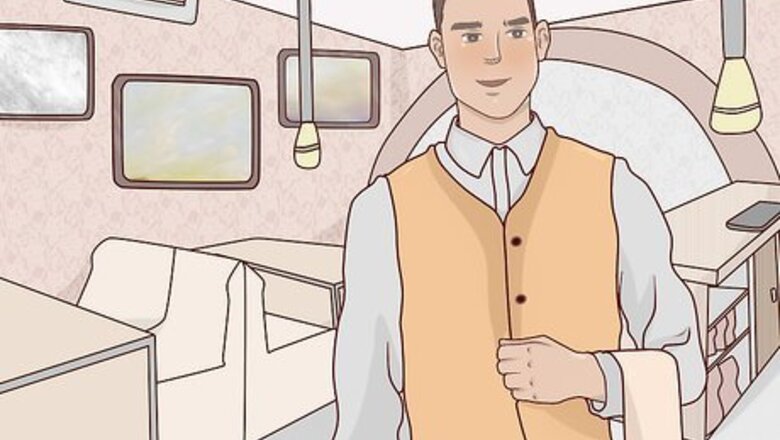
views
Greeting the Table

Smile and greet the customers when they first arrive. Try to talk to your guests within 2 minutes of them sitting down. As soon as you approach the table for the first time, smile and make eye contact with each of the guests so you seem more friendly. Introduce yourself by name and let them know that you’ll be serving them during the meal. Keep a conversational tone so you seem friendly and approachable. For example, you may say something like, “Hi, welcome to Sal’s. My name is Jane, and I’ll be your server tonight. How is everyone doing?” If you’re busy or unable to get to the table within 2 minutes of your guests sitting down, ask another member of staff to greet them so they don’t feel neglected.

Let the table know about the restaurant’s specials if there are any. Even if you have a printed list of specials on the table, make sure to talk about at least 1 or 2 so the table knows about them. Try to describe the specials as well as you can and mention anything unique about them, like if they’re made from local ingredients or use a different cooking method than normal. Be ready to answer questions about the dishes since the customers may want to know more. For example, you could say, “Tonight, our special is fresh grilled salmon served on a smoked cedar plank served with mixed vegetables.” If there isn’t a list of specials at the table, you can also mention the price of the meal when you describe it.
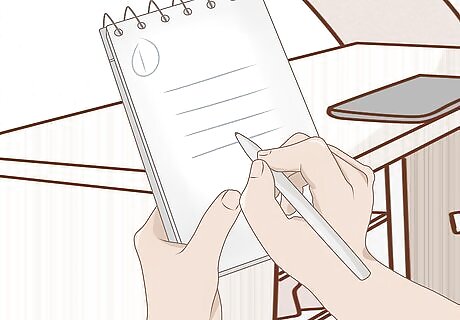
Label a notepad with the table and seat numbers. Put the table number at the top of the notepad’s page so you don’t forget the order. Write the number “1” in the left margin of the page and leave a 3–4 lines to write down the order. Continue numbering down the page for the number of people at the table. Choose 1 person at the table and assign them the first seat. Assign the rest of the seats clockwise around the table so you remember who ordered what meal. Every restaurant uses a different system to keep track of tables and seats, so talk to your manager to find out their preferred method. The table may not be labeled anywhere else except for a floorplan at the server’s station. Make sure you’re familiar with how the tables are numbered so you can accurately write it down. If the restaurant uses an electronic ordering system, make sure you have the right table selected from the menu.

Ask for the table’s drink order first. Rather than just asking what everybody wants, try to offer specific drinks from the menu to upsell to the group. Start with the person who seems the most ready to order and continue going around the table clockwise until you get all of the drink orders. Write down each of the drinks in the correct seat so you remember who to give them to. You may need to submit the order to the bar if your restaurant has one, or you may need to fill the drinks yourself. For example, rather than saying, “What would you like to drink?”, you may instead ask, “Can I start you off with a soda or lemonade?” Be sure to specify what brands of soda or drinks you have so customers don’t get something they aren’t expecting. For example, if someone asks for a Coke, you may say, “We have Pepsi products. Would that be okay?”

See if the customers want to start their meal with an appetizer. Recommend 1–2 popular appetizers from the menu for the table to see if they want a dish to share. Allow the guests a few seconds to think it over for a few seconds before they answer. Don’t try to force your customers to order something if they don’t want it. If they do order an appetizer, write it down on your order slip and submit it to the kitchen. For example, you could ask, “Does anyone want to try our mozzarella sticks or a salad before their meal?”
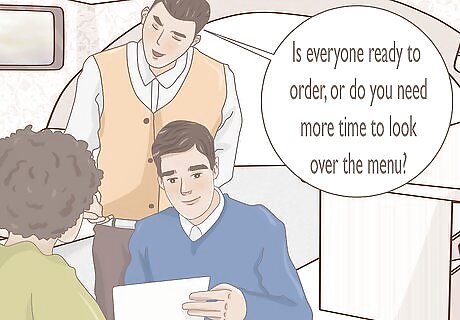
Give the table more time if they aren’t ready to order yet. When you come back with the drinks or the appetizer, ask them if they’re ready to place their order. If they aren’t, step away for 2–3 minutes so they have time to look over the menu and make a decision. Pay attention to when the customers close their menus since this could mean they’re ready to order. For example, you may ask, “Is everyone ready to order, or do you need more time to look over the menu?” Don’t try to rush people into ordering since they won’t feel as welcome in the restaurant.Tip: Make sure you know the restaurant’s menu well since some guests may ask you questions about dishes or for recommendations.
Writing down the Orders

Listen intently while you write down each customer’s order. Start with the person who looks the most ready to order and find their seat on your notepad. Make eye contact with the person who’s telling you their order and lean in closer so you can hear them better. Only look away from the customer when you write down what they’re ordering. Be sure to write everything legibly so you don’t make any mistakes when entering the order later on. Continue around the table clockwise as you take the orders, making sure to write everyone’s order in the correct seat. Some restaurants will ask you to take orders from women at the table before you take them from men. Ask your restaurant manager to see what they prefer.Tip: It’s okay to use shorthand when writing down the order as long as you know what your abbreviations mean. For example, if someone wants a small order of fries, you may write, “sm. fry,” to save time. If you need to give the order slip to someone else, make sure they’re familiar with the shorthand you’ve written, or else they may get confused.
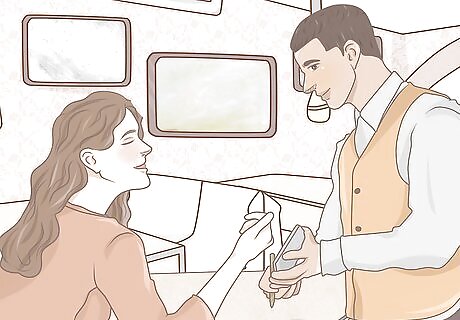
Ask how they want their meal prepared if there are multiple options. Some meals may have optional sides or different cooking temperatures, so inquire about how they want it done. List all of the available options the customer can choose from so they know their options and make sure to write down whatever they say so the kitchen cooks it properly. For example, if someone orders a steak, you may ask, “Would you like that rare, medium, or well-done?” If the guest has special requests, such as sauce on the side or omitting an ingredient, circle it on your notepad so you remember there’s something different you need to pay attention to. If someone asks if you can make a substitution and you don’t know, tell them you will ask the kitchen first. Don’t promise or say yes to something if you don’t know if the kitchen can complete the order.

Upsell add-ons or sides for the order if there are any. If your restaurant offers additional ingredients or optional sides, try to recommend 1–2 for each customer’s order so they can think it over. Be sure to list how much extra it will cost if they include it in their meal so they aren’t surprised when they get the bill. Don’t be too pushy or force them to buy an item if they don’t want it. For example, if someone orders a cheeseburger, you can ask, “Would you like to add bacon on that for an extra dollar?” If someone requests something and you know it has an upcharge, ask the customer if that’s okay before writing the order. For example, if they want to substitute a veggie burger instead of beef, you may say, “That will cost an additional $1. Is that okay?”
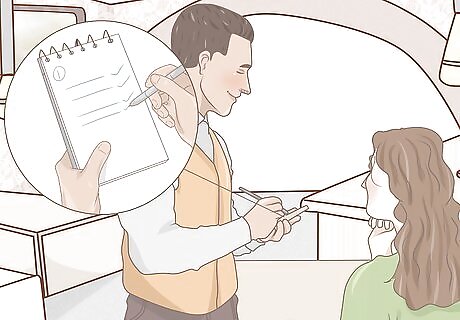
Repeat the order back to the customers to ensure it’s correct. After a table completes their order, read it back to them to make sure you wrote it down correctly. Be sure to emphasize any changes or requests that they’ve made to show that you didn’t forget about them. Ask if everything sounds correct or if you need to make any changes. If you got the order right, thank the table and collect everyone’s menus. If you made a mistake, make sure to cross off anything you wrote before correcting it. If you’re taking an order for a large party, repeat a customer’s order back while they’re telling you what they want so you don’t have to recite everyone’s order to the entire table later on.
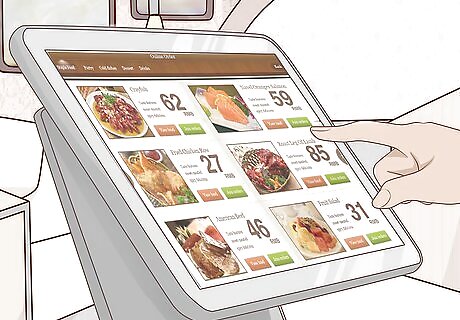
Enter the order into a point-of-sale system if the restaurant uses one. Take the order slip to the computer at the server’s station and select the table that made the order. Go in seat order and punch in each item the customers ordered, making sure you make note of any special requests they had. After you put in all of the items, compare what’s on the computer screen to the order slip to make sure you punched it in correctly. If you don’t have an electronic point-of-sale system, then give the order slip directly to the kitchen so they can start preparing the food. If there was a confusing request, explain it to the kitchen directly so they prepare the food properly.
Following up during the Meal

Check on the table 2 minutes after they start eating to see if they’re satisfied. After delivering the food to the table, let them take a few bites first so they have time to taste their meals. Make sure to visit the table again within 2 minutes and ask if everything is okay. Pay attention to any requests or concerns the customers have and try to correct them as soon as possible. For example, you can ask, “How is everything tasting tonight? Do you need any extra sauce?” If something is wrong with the order, apologize and tell them that you’ll fix it right away. Take the food back to the kitchen and let them know about the problem and ask your manager if there are any additional steps you need to take, such as compensating them with a meal or a discount.
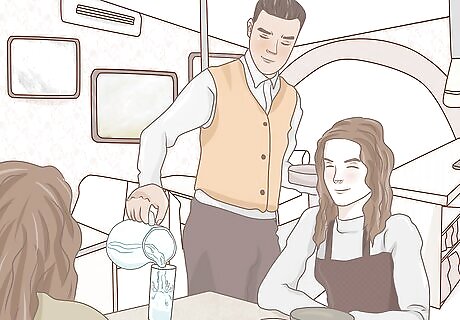
Watch the table to see if they need refills or assistance. While everyone at the table eats, pay attention to their body language and how much they have left of their drinks. If the customers are looking around or have stopped eating, check on them to see if you can get them anything. If you notice the glasses are less than half full, go back to the table and offer to refill them. Try to check up on the table at least 2–3 times during the meal. Always approach the table with a smile and use a friendly tone to ensure you provide the best experience for your guests.

Ask if anyone wants dessert before they finish their meal. Wait until everyone at the table is nearly finished with their entrees before asking about dessert. Let them know about 1–2 specific dishes so they have options to choose from. Don’t force anyone to buy dessert if they don’t want any. For example, you may say, “Have you saved room for fresh apple pie with ice cream? It pairs great with our coffee.”Tip: This is also a great time to ask if anyone needs a to-go box if they aren’t able to finish their meal completely.
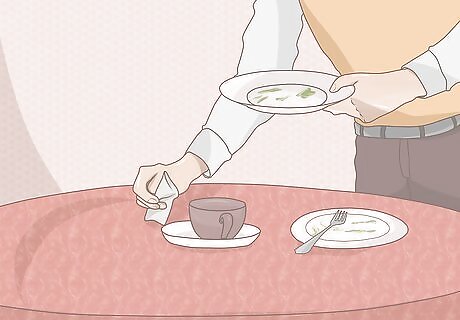
Clear plates or dirty dishes when all the guests finish their meals. Wait until everyone finishes eating so other people don’t feel rushed to finish. Stack the plates and silverware so they’re easier to carry and clear them as soon as possible. Leave any glasses or dining ware on the table that the customers are still using.

Thank the customer when you give them their bill. Place the bill in a central location on the table, or give it to someone if they specifically ask for it. Don’t try to rush the table to finish their meals or pay for the bill so they feel like they still have time to sit and chat when they’re done eating. Thank everyone for coming to the restaurant and tell them to have a good rest of their day after they pay. For example, you could say, “Here’s the bill whenever you’re ready. Thanks for coming out tonight. It’s been a pleasure serving you!”















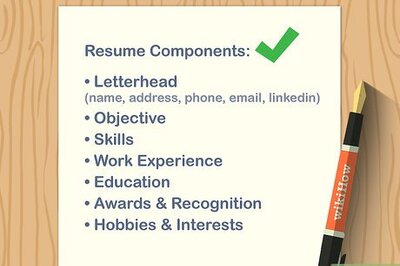

Comments
0 comment